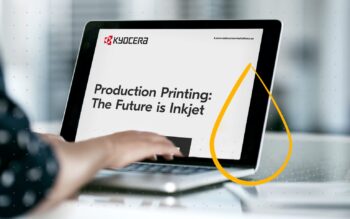High-speed digital inkjet devices have torn up the rulebook for production printing. How will the industry respond?
Printing continues to play a key role in a number of industries, ranging from healthcare and education to banking and insurance. Despite the rise of digital media, paper continues to enjoy a great deal of authority. Many people prefer to read a book they can hold and experience with multiple senses, and the same is true for communications materials. Even the digital natives are more responsive to paper than digital stimuli, so printing will form part of many companies’ communications strategies for the foreseeable future.
What really sets inkjet apart from its rivals is the flexibility it offers. Digital printers are typically used for low-volume work, because once production reaches a certain level it can be incredibly expensive to keep printing. But inkjet has overcome this limitation, bringing the benefits of digital technology to high-volume as well as low-volume jobs. That means efficiency and advanced personalisation options, which enables companies to affordably produce runs of varying lengths. This ability to adapt and meet changes in demand provides a serious competitive advantage in today’s volatile markets.
On top of this, the ability to print short runs means that users are no longer forced to make do with expensive hybrid solutions involving pre-printed offset templates. Companies can save money on outsourcing print work or transporting and storing templates. Inkjet also helps to prevent overproduction, reducing waste in terms of time, money, and materials. By making efforts to limit waste and respect the environment, companies can portray themselves as eco-friendly and differentiate themselves in increasingly narrow and competitive markets.
Inkjet technology acts as a driver for growth by offering the perfect combination of features to take advantage of the continued importance of printing in our digital world. High-quality, on-demand printing empowers marketing teams in several key ways. It enables them to harness the power of whatever data they have collected and use it to customise their content in order to target potential or existing customers more effectively.
Since the human brain finds print easier to read and understand than digital media, sending vibrant promotional and communication materials in paper format is highly likely to capture people’s attention and encourage a response, which can be converted into a lead and possibly a future customer. Inkjet and its personalisation powers offer a secret weapon for marketing departments, as it enables them to coordinate campaigns that make the most of both print and digital media to deliver messages and information efficiently and effectively. Acquiring an inkjet printer will help companies maximise their relationships with customers and quickly achieve a positive return on their investment.


